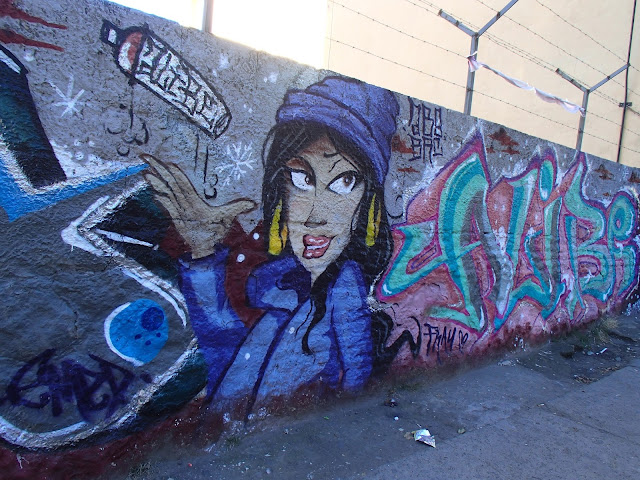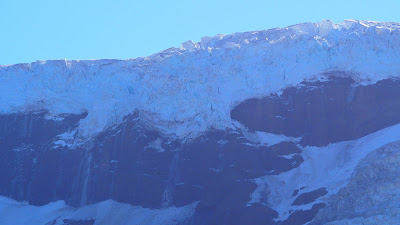 |
| Civic Centre, Bariloche |
My recollection of those chocolate box pictures, is of quaint thatched country cottages, stately manor houses, or rustic cabins, so when people talk about a 'chocolate box' town, I think it has to be either impressive, pretty, or at the least, charmingly old-fashioned. Bariloche is none of these.
 |
| Civic Centre, Bariloche |
The town has no defining character or style to set it apart from anywhere else. Again, there's nothing wrong with it, just in my view, there's nothing special about it either.
 |
| Cathedral, Bariloche |
It's a bit like the cathedral here, which has some nicely detailed stained glass windows that includes scenes relevant to the area, but has a strange unplastered concrete look to some of the pillars and walls inside. It just ends up not quite working, and so left me underwhelmed.
What does set the place apart - aside from the unbelievable number, and in particular the size, of the chocolate shops, is the setting. Looking out from the town, you have the lake and mountains, and once you get out into the national parks, or up the mountains, the views are beautiful.
Mind you, the lake - or rather one of the islands in the lake - holds a secret past. Apparently, in the 1950s, the then President Perón tried to build the world's first fusion reactor. It was done covertly, on Huemel Island, but was never completed, despite running up a huge bill.
 |
| Confession Box, Cathedral, Bariloche |
 |
| German School, Bariloche |
It appears the local population were quite content to have such people in their midst, judging them on their time in the community, rather than on the acts they committed previously. Perhaps I could understand that if the individuals concerned had acted under pressure, rather than their own prejudices and choices, or if they genuinely showed remorse for their actions, but reports suggest that Priebke and others were still quite fond of the same terrible ideologies, so it seems unthinkable to me.
 |
| Civic Centre, Bariloche |
Of course we'd all forgotten about this, so it was a nice surprise when, walking back to our hostel one evening, we saw a Drago truck parked outside the hostel opposite. We popped in, and sure enough, the hostel confirmed that Duncan was one of the drivers. He wasn't there at the time, so we left him a message, and we were able to meet up the next evening.
It's always nice to catch up with people we know, and even better on this occasion, as we used it as a good excuse to go to Manush, the brew pub on the corner that we had, thus far, valiantly resisted. So we had a great evening, treating ourselves to a burger and a few of their excellent beers. We even had a nice little boost when Duncan said he had immediately noticed the difference in how we looked from before, so that was encouraging.
























































